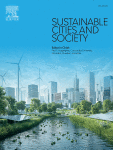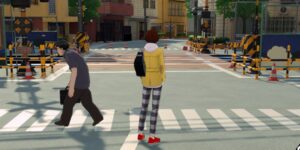Revolutionizing Urban Bus Fleet Management with AI-Driven Digital Twins

Transforming Urban Bus Fleets: The Shift Towards Sustainable Transportation Solutions
The Environmental Impact of Transportation Systems
Transportation systems are responsible for a staggering 50% of global oil consumption and contribute 18% of carbon dioxide emissions. Between 1990 and 2019, emissions from this sector surged by 80% (Bhatti et al., 2021). Urban buses play a significant role in this environmental crisis, accounting for 27% of energy demand, 60% of particulate matter emissions, and 22% of greenhouse gas emissions (Spreafico et al., 2020). Transitioning to sustainable options, such as electric or gas-powered buses, aligns with the United Nations Sustainable Development Goals but presents financial challenges. While electric buses significantly lower local emissions (Todorut et al., 2020), their implementation necessitates considerable initial investments in charging infrastructure, which can represent 68.59% of upfront costs, along with periodic battery replacements that account for 10% of the bus’s total cost (Wang et al., 2022; Onat et al., 2022). Although modernizing public transport by replacing diesel or gas vehicles with electric alternatives increases costs, it can ultimately be cost-effective due to reduced pollution and lower maintenance expenses (Emilia et al., 2020). In contrast, compressed natural gas (CNG) buses may offer lower operational costs but are hindered by spatial and infrastructural constraints (Guo et al., 2016; Badami et al., 2020). Life cycle cost (LCC) analysis has become an essential tool for navigating these complexities, encompassing acquisition, operation, maintenance, and disposal costs (Riechi et al., 2017; Szumska et al., 2019).
- The Environmental Impact of Transportation Systems
- Economic and Environmental Challenges in Fleet Modernization
- The Role of Electric Buses in Sustainable Development
- Addressing Complex Urban Governance Challenges
- Research Overview and Key Questions
- Proposed AI-Digital Twin Framework for Tehran
- Conclusion and Future Directions
Economic and Environmental Challenges in Fleet Modernization
The modernization of urban bus fleets is further complicated by fluctuating economic and environmental factors. Emilia et al. (2020) highlight that fuel type, spatial considerations, and environmental conditions significantly affect LCC outcomes. For instance, in Delhi, the switch from diesel to CNG buses reduced emissions but came with high deployment costs, while electric buses in Nepal demonstrated slight LCC advantages over a 12-year period (25.2 million NPR compared to 25.9 million NPR for diesel) (Maharjan et al., 2020). However, electric buses still struggle to compete due to high battery costs, despite offering 21% lower maintenance expenses than CNG options (Guo et al., 2016). Financial analyses conducted in Istanbul indicated that diesel buses were the most cost-effective (total cost of ownership: 384,187.61€), while electric models present long-term benefits through reduced operational costs (Topal et al., 2018). These conflicting findings underscore the necessity for adaptive decision-making frameworks, particularly in developing countries like Iran, where budget constraints and pollution issues are pressing.
The Role of Electric Buses in Sustainable Development
Research indicates that electric buses can recoup investments in under five years, providing substantial environmental and economic benefits crucial for reducing CO2 emissions and meeting sustainable development objectives. In contrast, reliance on fossil fuels continues to contribute to emissions, revealing a U-shaped relationship where economic growth exacerbates environmental pollution (Dulce et al., 2024; Dai et al., 2023).
Addressing Complex Urban Governance Challenges
The privatization of urban governance and the modernization of bus fleets have led to “wicked problems” characterized by hidden variables and dynamic parameters (Noto & Bianchi, 2015). Traditional LCC models often fall short in addressing such complexities, necessitating innovative solutions like AI-driven digital twins (DTs). A digital twin—a virtual representation synchronized with physical systems (Wu et al., 2022)—facilitates real-time monitoring and predictive analytics, optimizing cost-benefit trade-offs. In Tehran, where diesel, CNG, and electric buses coexist, this technology could help balance financial constraints (e.g., municipal budgets) with environmental goals by simulating various scenarios in a metaverse environment. According to life cycle cost analyses, electric vehicles still lag behind internal combustion engine vehicles due to their high battery costs (Ayodele et al., 2020).
Research Overview and Key Questions
This study synthesizes insights from 54 articles published between 2011 and 2025, sourced from platforms like Google Scholar, Scopus, Nature, and ScienceDirect, using keywords related to life cycle cost models, real-time data, digital twins, AI, and product lifecycle management. From an initial pool of 100,000 records, 45 studies published post-2020 focus on AI-driven LCC optimization, yet none specifically address the unique challenges faced by Tehran. The analysis is guided by three research questions:
- How do product lifecycle models inform urban bus fleet renewal planning?
- How can real-time AI integration enhance lifecycle cost modeling?
- What digital twin architecture optimizes modernization trade-offs?
Proposed AI-Digital Twin Framework for Tehran
The suggested AI-DT architecture incorporates hybrid simulations, predictive maintenance, and dynamic LCC analysis to tackle Tehran’s complex challenges (refer to Q1). For instance, it forecasts optimal renewal timelines by analyzing real-time data on emissions, fuel efficiency, and maintenance costs, facilitating a phased transition from diesel to electric fleets despite budgetary limitations. Unlike previous studies, this framework utilizes metaverse environments for scenario testing, addressing gaps in hybrid infrastructure planning, such as the simultaneous deployment of charging stations and CNG networks.
Conclusion and Future Directions
The introductory section outlines the importance of the subject, particularly focusing on the conceptual design of an AI and simulation-based digital twin. The subsequent section delves into the various types and characteristics of digital twins. Following that, the current status of buses in Tehran is examined. The fourth section presents a product lifecycle cost calculation model based on earlier studies and the digital twin concept. Finally, the conclusion summarizes the strengths and weaknesses of the proposed model, paving the way for future research and implementation strategies.






